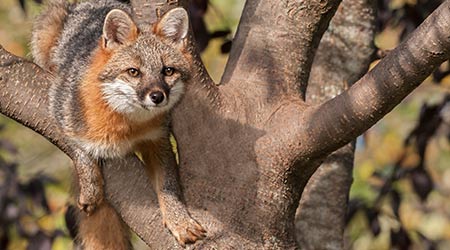
The Birds and the Bees and a Fox on the Roof
December 10, 2018
Managers are responsible for the condition and performance of roofs on institutional and commercial facilities, but how many know exactly what’s going on up there? Judging by recent reports, a lot is going on up there.
A gray fox recently was rescued from the roof of the Duquesne Club , a private Pittsburgh social club. Officials have no clear indication how the animal accessed the roof, which is several stories above street level, though gray foxes are known to climb trees.
The fox had company, apparently. The club also hosts a rooftop apiary. As vegetated roofs, rooftop agriculture, and urban beekeeping grow in popularity, more facilities are making space on roofs for bee hives. The honey is sometimes shared with tenants as an amenity, and at least one Chicago high rise includes rooftop bees in its pitch to prospective tenants.
Then there was the Minneapolis raccoon this summer. Remember him?
Birds are no surprise on roofs, but at least in one area, roofs have become a critical habitat for threatened species. In Florida, least terns are losing their natural beach habitat to development, so the birds have adapted, in part, by finding alternative nesting habitats on tar and gravel roofs.
A colony of the seabirds has made their seasonal nesting home on the roof of the Nelson Poynter Memorial Library at the University of South Florida for the last two decades. When the library needed a new roof in 2017, facility managers pushed the project back until late September to allow the birds to raise their young. But besides needing accommodating facility managers, the terns also need accommodating ballasted roofs, which are less common as roofing technology changes.
Naomi Millán is senior editor, Building Operating Management. If you've had any interesting animal visitors on your facility's roof, I'd love to hear about it.
Next
Read next on FacilitiesNet












